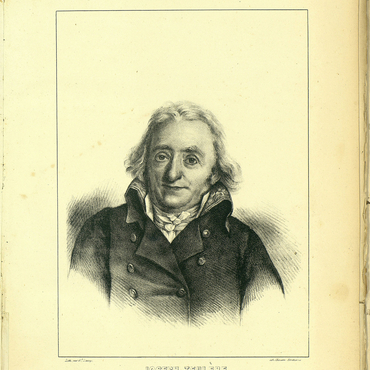
- Home
- The Age of Enlightement
- Teulère, architect and engineer
- Teulère, man of the Enlightenment
Joseph Teulère was born in Montagnac, near Agen, in 1750. From humble origins (he was the son of a master mason), he quickly rose to prominence on the basis of his work alone. He climbed the ladder of his profession, passing from apprentice to journeyman stone marker, while studying architecture in Paris. This self-made man, who was described as "industrious and intelligent", entered the services of the Navy in Bordeaux as an "architect acting as a civil engineer". This led to his taking charge of the maintenance and work at the Cordouan tower. Teulère was a tireless worker who was equally comfortable in the field and working on theoretical and technical questions – a product of the Enlightenment of Rousseauian leanings. He spent fifteen years of his life working on Cordouan – a monument that fascinated him – and on the development of the estuary. He acted as both architect and engineer on the many projects around the raising of the tower in the 1780s. His many memoranda, studies and drawings, his soundings of the tower's foundations and his structural calculations are all proof of a fundamentally scientific approach that included a genuine modelling aspect. Following the negotiations, it was Teulère himself who managed the project and oversaw the worksite directly, living there for long periods of time. In 1793, the administration noted that, in his 17 years of service, Teulère had spent 88 months "at the sea or at the Cordouan tower". Teulère, a talented mapmaker, was also an inventor who contributed to improvements to Cordouan's system of parabolic reflectors and the mechanism of its rotating light. Although his talents were partially recognised in 1787 when he earned a diploma of second engineer of marine structures, it was not until after the French Revolution that he was appointed senior engineer for civil marine structures for the arrondissement of Rochefort, before becoming one of the four maritime construction managers in 1799. His fiche professionnelle from 1791 provides an excellent description of his personality and his skills as seen by the Navy's administration: "Quite gentle, honest, very modest and very hard-working. He is quite well educated, combining practical experience with theory (…) He has proved his abilities in the work he has performed on lighthouses and for the elevation of the Cordouan tower…"



